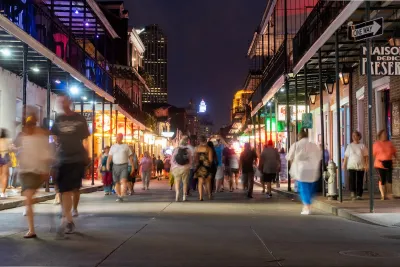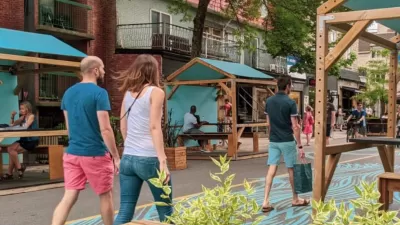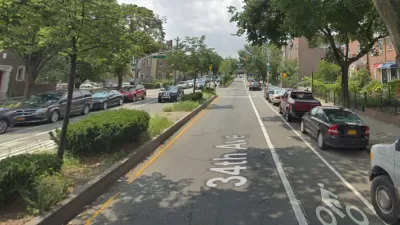The conversation around pedestrianizing public streets isn’t new — think Times Square. Could one of America’s oldest streets lead the way in a revival of the pedestrian mall?

Pedestrian malls, while rarer than in European cities, aren’t new to the United States. Times Square, Santa Monica’s Third Street Promenade, and Fremont Street in Las Vegas are just a few examples of pedestrianized zones in U.S. cities (some more quasi-public than others).
In fact, according to a Streetsblog USA article by Kea Wilson, “city leaders blocked cars from entering more than 200 downtown pedestrian malls across America throughout the 1960s and '70s, hoping to replicate the success of the shopping-oriented pedestrian plazas that are a fixture across much of Europe.” But the isolated locations of many of these plazas and the lack of cultural connection with the concept led to the failure of many to thrive.
The New Year’s attack on Bourbon Street, perpetrated in part with a large truck and aided by a lack of robust safety infrastructure, sparked a new call to pedestrianize Bourbon Street in New Orleans and make it safe for people walking all the time rather than on select occasions, with advocates saying that “pedestrianizing Bourbon Street would simply strengthen the temporary barriers that are already supposed to go up during periods of peak foot traffic but often don't, immediately making the tourist Mecca safer from all manner of vehicular threats.”
Closing a space permanently to cars can make it easier and more affordable to build secure infrastructure and limit ingress while still planning for emergency vehicles. If an already popular pedestrian destination like Bourbon Street would commit to it, other U.S. cities might follow suit.
FULL STORY: Could the Comeback of the U.S. Pedestrian Mall Start on Bourbon St.?

Alabama: Trump Terminates Settlements for Black Communities Harmed By Raw Sewage
Trump deemed the landmark civil rights agreement “illegal DEI and environmental justice policy.”

Planetizen Federal Action Tracker
A weekly monitor of how Trump’s orders and actions are impacting planners and planning in America.

The 120 Year Old Tiny Home Villages That Sheltered San Francisco’s Earthquake Refugees
More than a century ago, San Francisco mobilized to house thousands of residents displaced by the 1906 earthquake. Could their strategy offer a model for the present?

Ken Jennings Launches Transit Web Series
The Jeopardy champ wants you to ride public transit.

BLM To Rescind Public Lands Rule
The change will downgrade conservation, once again putting federal land at risk for mining and other extractive uses.

Indy Neighborhood Group Builds Temporary Multi-Use Path
Community members, aided in part by funding from the city, repurposed a vehicle lane to create a protected bike and pedestrian path for the summer season.
Urban Design for Planners 1: Software Tools
This six-course series explores essential urban design concepts using open source software and equips planners with the tools they need to participate fully in the urban design process.
Planning for Universal Design
Learn the tools for implementing Universal Design in planning regulations.
Clanton & Associates, Inc.
Jessamine County Fiscal Court
Institute for Housing and Urban Development Studies (IHS)
City of Grandview
Harvard GSD Executive Education
Toledo-Lucas County Plan Commissions
Salt Lake City
NYU Wagner Graduate School of Public Service





























